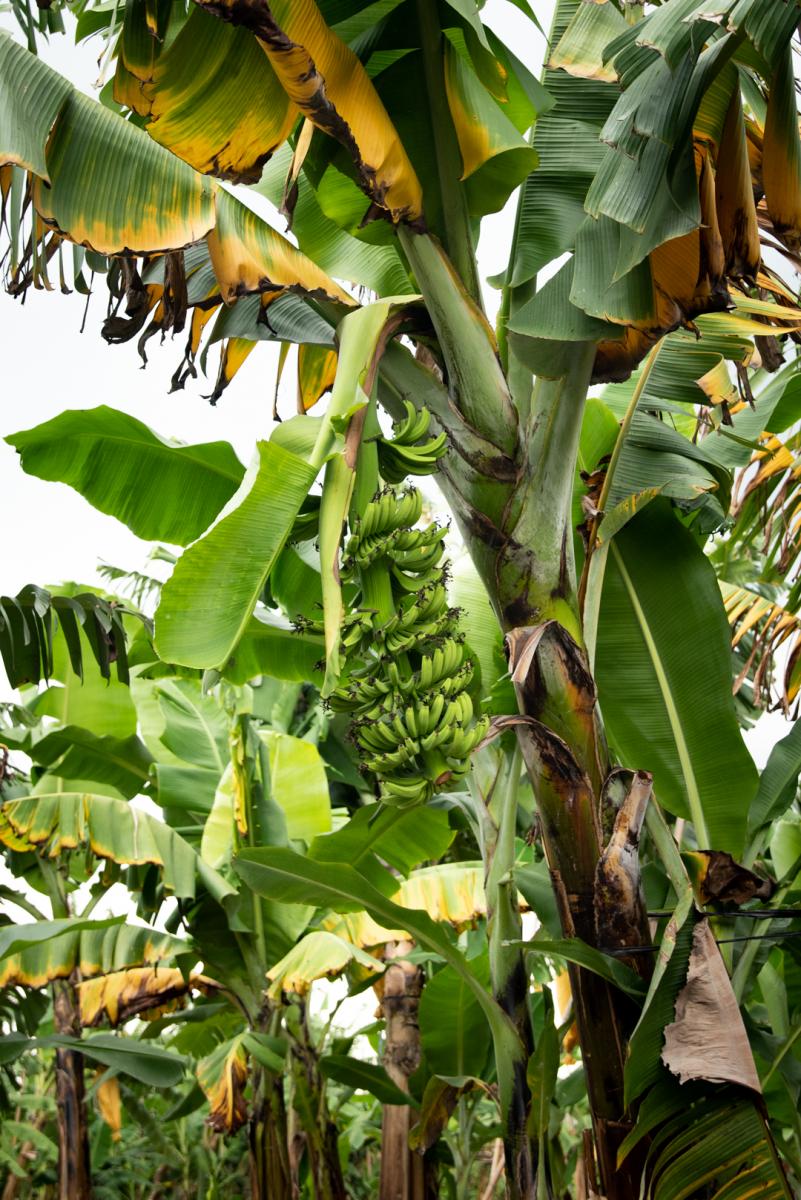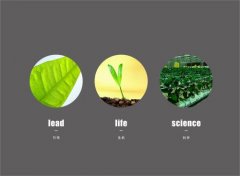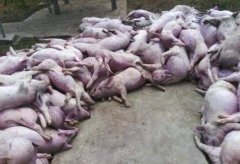Banana yellow leaf disease: what do you think of banana yellow leaf disease? What is the symptom of banana yellow leaf disease?
Bananas, which are common in supermarkets, are also easy to get the "yellow leaf disease" known as cancer. There is no cure for yellow leaf disease, which has a serious impact on the income of banana farmers, and also affects the stability of the supply of Taiwan banana on the day of sale. At that time, the planting area of Taiwan banana fell from 50,000 hectares to 9,000 hectares. Let's take a look at it.

The history of international banana trade with yellow leaf disease reshuffle appeared in Taiwan 51 years ago.
In the midsummer of July, when you drive to Pingtung County and Kaohsiung City, the main banana producing areas in Taiwan, you will find that in the whole green banana garden, several banana trees have yellowed leaves, some petioles have softened and drooped, and even the whole plant has withered. This is commonly known as banana cancer "yellow leaf disease."
Banana yellow leaf disease, also known as Panama disease (Panama disease), is a soil-borne fungal disease. It prefers an acidic soil environment and can survive in the soil for decades without hosts, and there is still no cure for this disease, so once the banana garden is infected with yellow leaf disease, it is like sounding the alarm of cancer. It will take three or 40 years to waste farming before it is possible to grow bananas again.
Bananas are likely to suffer from yellow leaf disease at all stages of infection. If the infection does not cause death before heading, the fruit will become short and skewed.
Banana yellow leaf disease is rampant all over the world, and almost none of the main producing areas of bananas in the world, including the Philippines, India, Indonesia, Vietnam, China, Central and South America and so on. In the 1950s, it destroyed the main international export variety Gros Michel, which led to the cultivation of Central and South America, which was dominated by Macbec, and changed to Cavendish, which is the same main strain as Taiwan banana, thus opening a new chapter in the history of international banana trade.
Yellow leaf disease was first discovered in Taiwan in 1967 in a banana garden in Jiadong Township, Pingtung County. At that time, it was the golden age when Taiwan bananas were exported to Japan, and the area of bananas was as high as 50, 000 hectares. According to the trade statistics of Japan's Ministry of Finance, Taiwan sold about 394000 metric tons of bananas that year, accounting for 82 percent of the market in Japan. After that, Taiwan's banana industry plummeted, with Ecuador, the Philippines and other producing countries competing for the Japanese market. Inside, the spread of yellow leaf disease had a serious impact on the livelihood of banana farmers.
Long-term soil, spread with water, spread and spread difficult to prevent
About eight years ago, bananas were first sold to Yu Chih-jung, a banana farmer with unified supermarkets in Taiwan through the distribution system of Dole Foods. There are now 40 hectares of banana plantations in Pingtung County. As a banana farmer of the third generation, he recalls that four or 50 years ago, his father was attacked inside and outside for growing bananas, saying that he was miserable at all.
"at that time, farmers had a poor concept of epidemic prevention, yellow leaf disease continued to spread, and farmers would be afraid. When I planted bananas, I used to have 10 hectares. In the later stage, when the banana garden began to get sick, my father took over planting lotus fog or miscellaneous grain or picking rice rotation. The banana cultivation area was only maintained at 1 to 2 hectares. At that time, even his own wages were not counted. I most remember that one year was very serious. My father received only 50,000 yuan per hectare. However, the cultivation cost is 70 to 800000 yuan, which is so miserable that even the capital can not be earned back. "
Bananas can be harvested throughout the year, but bananas in the Gaoping area are mainly in spring and summer.
Long-term guarantee responsibility for the export of Taiwan bananas to Japan Guo Ming, founder of the Qishan Fruit and vegetable Transportation and Marketing Cooperative in Kaohsiung City, witnessed the outbreak of yellow leaf disease in his banana garden when he was in his teens. He said that in serious cases, the incidence of banana plantations is as high as 70%. To put it simply, 7 out of 10 banana trees are infected. Over the past few decades, some banana farmers in Qishan District have turned to other crops, while others have opened up new land to grow bananas.
However, the spread of yellow leaf disease is too fast, the pathogen will spread with the river water, irrigation water, agricultural tools, and early farmers will pull out the diseased plants and abandon them on the edge of the field or by the ditch, which virtually increases the speed of spread of yellow leaf disease. According to data from the Taiwan Banana Research Institute in 1988, after diseased plants were found in Jiadong Township, Pingtung County in 1967, yellow leaf disease spread all the way from Jiadong Township to Linbian Township and Nanzhou Township in Pingtung County, and spread to banana-producing areas such as Qishan District and Meinung District in Kaohsiung City in 1973. After 1980, banana-producing areas such as Nantou County, Hualien County and Taitung County also fell one by one, and none of Taiwan's banana producing areas were spared.
Because yellow leaf disease is rampant in Taiwan, and the number of bananas purchased by Japan is decreasing year by year, the cultivated area of bananas in Taiwan has been declining from 50, 000 hectares in 1967 to only 9, 000 hectares in 1977.
There are different opinions from different sources, and it is impossible to predict the time and probability of onset.
In the years when yellow leaf disease began to spread, various experimental improvement units and plant pathologists were looking for the cause and the solution, of which the Taiwan Banana Research Institute was the most involved. Director Zhao Zhiping said that before 1967, the yellow leaf disease would not infect the Hua Jiao strain, which is the main variety cultivated in Taiwan, so at first people from all walks of life did not dare to conclude that it was the yellow leaf disease. It was not until Su Hongji, an honorary professor in the Department of Plant Pathology and Microbiology of National Taiwan University, that international experts brought the pathogen back to the United States to inoculate that it was a new type of yellow leaf disease. It is called "Yellow Leaf Disease Tropical Race 4 (TR4)".
Just as the pathogenicity of different types of bird flu will continue to evolve, TR4 can infect not only big McCain and Luzon bananas that can be infected by race 1 of yellow leaf disease, and Nanhua bananas that can be infected with race 2 of yellow leaf disease, but also northern bananas of Taiwan.
But how on earth did yellow leaf disease spread to Taiwan? There is still no standard answer. Zhao Chih-ping said that Taiwan bananas were introduced from China's Fujian Province 280 years ago, while Fujian bananas came from Malaysia, Indonesia and other countries. The current mainstream international inference is that it is possible that the pathogen came in with the banana provenance at an early stage. Until Taiwan began intensive cultivation of a single variety of Beijiao, the pathogen continued to evolve under the pressure of natural selection.
Chiang Shichao, former director of the physiology and biochemistry group of the Taiwan Banana Research Institute, says that TR4 is very strong because it can produce thick membrane spores and weather adversity such as cold and flooding, so even if farmers turn to aquatic crops such as rice and taro, they still have a chance to catch yellow leaf disease when they come back to grow bananas.

Chiang Shichao, former director of the physiological and biochemical team of the Taiwan Banana Research Institute, has studied the soil management of banana yellow leaf disease for a long time and found that the management mode of organic farming can greatly reduce the incidence of banana yellow leaf disease.
What is even more paradoxical is that the density of the pathogen of yellow leaf disease in the soil is not necessarily related to the incidence of the disease. In short, the lower the density of the pathogen, the lower the disease rate of the banana plantation. "you can't predict whether or when it will occur. I didn't know until the banana began to show symptoms, which is entirely a matter of probability. "Jiang Shichao said.
Chiang Shichao explained that yellow leaf disease begins to invade and destroy vascular tissue from the roots of bananas, affecting the transport of water and nutrients. From the outside, the leaves will shrink and yellowing, and if you cut the false stems of bananas, you will find that they have browned inside. Bananas may suffer from yellow leaf disease in different growth periods. If the infection does not die, the fruit will be short and skewed, and the fruit will lose its commercial value because of its poor flavor.
- Prev

What are the modern agricultural science and technology: the three treasures of agricultural science and technology, the product of the development of agricultural science and technology
The agricultural testing institute vegetable and fruit cultivation greenhouse uses double net and pest control walkway design to reduce the pest problem in the greenhouse, and by adjusting the plant spacing of crop cultivation, reserve the movement space of small agricultural machinery and tools, not only the number of cultivation per unit area has not been reduced, but also can cooperate with agricultural machinery and tools.
- Next

Latest situation of epidemic situation in Africa: latest news on African classical swine fever Musk Pig carcass was found in downtown Taipei
The Taipei City Government has set up a "government-level inter-bureau prevention and response team" on the 4th. As the epidemic of classical swine fever in Africa has attracted the attention of the Chinese people, the Department of Animal Protection called on the public not to panic if they find that pigs are sick, and once they find that the owners are discarded at will, they will be punished in accordance with the law, and the result will be better.
Related
- A one-day flower show brings 130 million yuan in orders! Nanhai, this Phalaenopsis exhibition is amazing
- What do the flower language and meaning of Lutheran tree mean? Precautions for planting Lutheran tree
- Encounter Chaoshan Kongfu tea, not without this cup of Phoenix single clump
- The durian market in Vietnam and Thailand is flooded. The price of imported durian has plummeted by 30-40% in a month.
- Shanghai solved the problem of local vegetable supply by planting 80,000 mu of green leafy vegetables.
- Wageningen University has become the best agricultural university in the world for the seventh time in a row.
- The strongest export season of South African grapes is full of challenges, with exports to Russia falling sharply by 21%.
- Sri Lanka is on the verge of bankruptcy, "Tea for debt" Organic Agriculture Revolution aggravates the Food crisis?
- Turning waste into earthworm manure and worm manure into organic fertilizer-A new choice for auxiliary farming
- Organic rice growers shoulder the responsibility of nurturing agricultural talents! Yinchuan Sustainable Farm with Organic Life Camp

